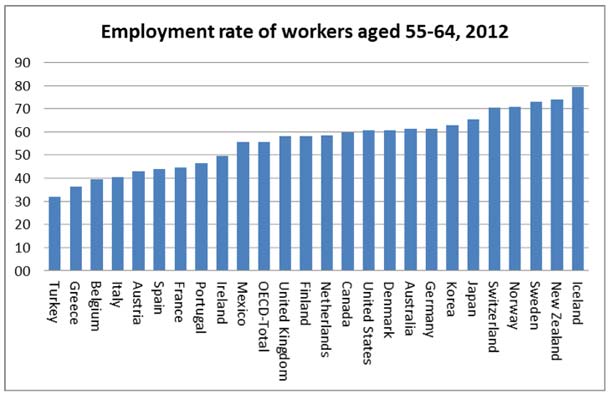Amid a general concern – and rightly so – about youth unemployment, there is another reality that is going almost unnoticed: the share of those over 55 that are not working. Some of them are unemployed, others are retired or out of the labor market.

The first thing worth noticing when looking at this data is the enormous variety across countries. The second one is that this variety is not only the result of the current crisis. Data from 2007 shows that OECD countries did not present big differences in employment rates for the general population, but differences became huge when considering only those workers aged 55 and over. Countries such as Iceland, Sweden or Norway had about 70 percent of their population aged 55 to 64 employed while the rate for Spain, Belgium or Greece fell below 45 percent. This is precisely the segment of population that is going to experience the largest growth in the coming decades according to demographic projections.
In a context of rapidly aging societies, this is a picture that our countries cannot afford.
A big part of the story is related to labor market characteristics such as the existence of part-time jobs, which are quite popular among golden workers. But a part is also related to the incentives of existing pension systems, such as whether or not pensions depend only on how much workers earn during their last few years of employment.





Some hard truths about the social and economic future in Europe; this time not about youth unemployment.
There is something fundamentally wrong with those European socioeconomic systems that fail miserably in offering youth a future. The same can be said about their inability to keep senior talent actively engaged in a country’s workforce. The contrast with the most advanced economies in Asia is telling – companies are willing to recognise and pay for expertise.
Economists often talk about innovation and networked readiness indexes to explain the widening gap between countries and regions. It is high time social and talent waste were addressed – especially in southern Europe. A country that fails its youth and neglects the experience of its senior workforce has no future.
That is a real problem. People over 55 lose almost all opportunities of being employed. In some countries, the cost of firing one of this persons is higher than younger workers, so companies think twice before doing it.